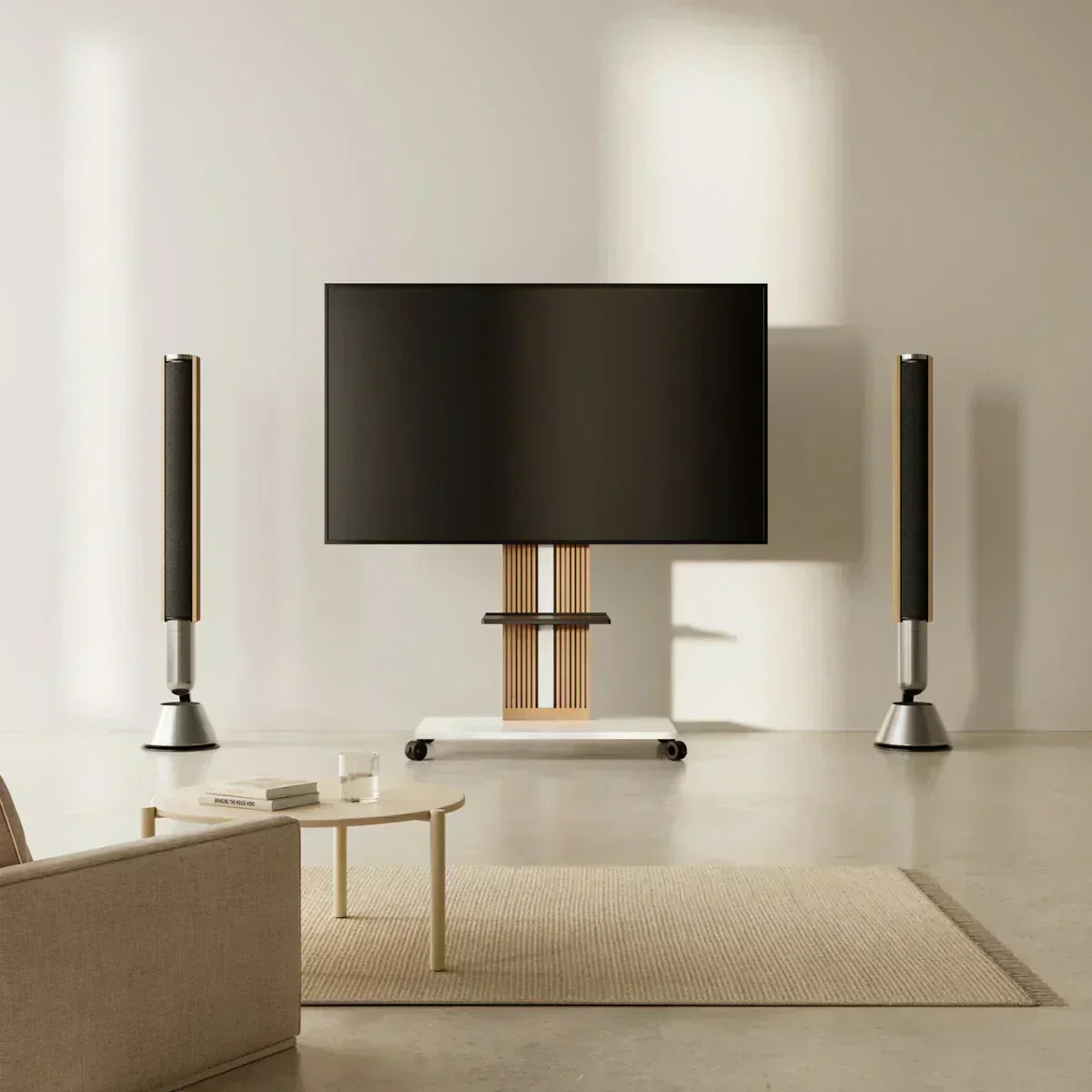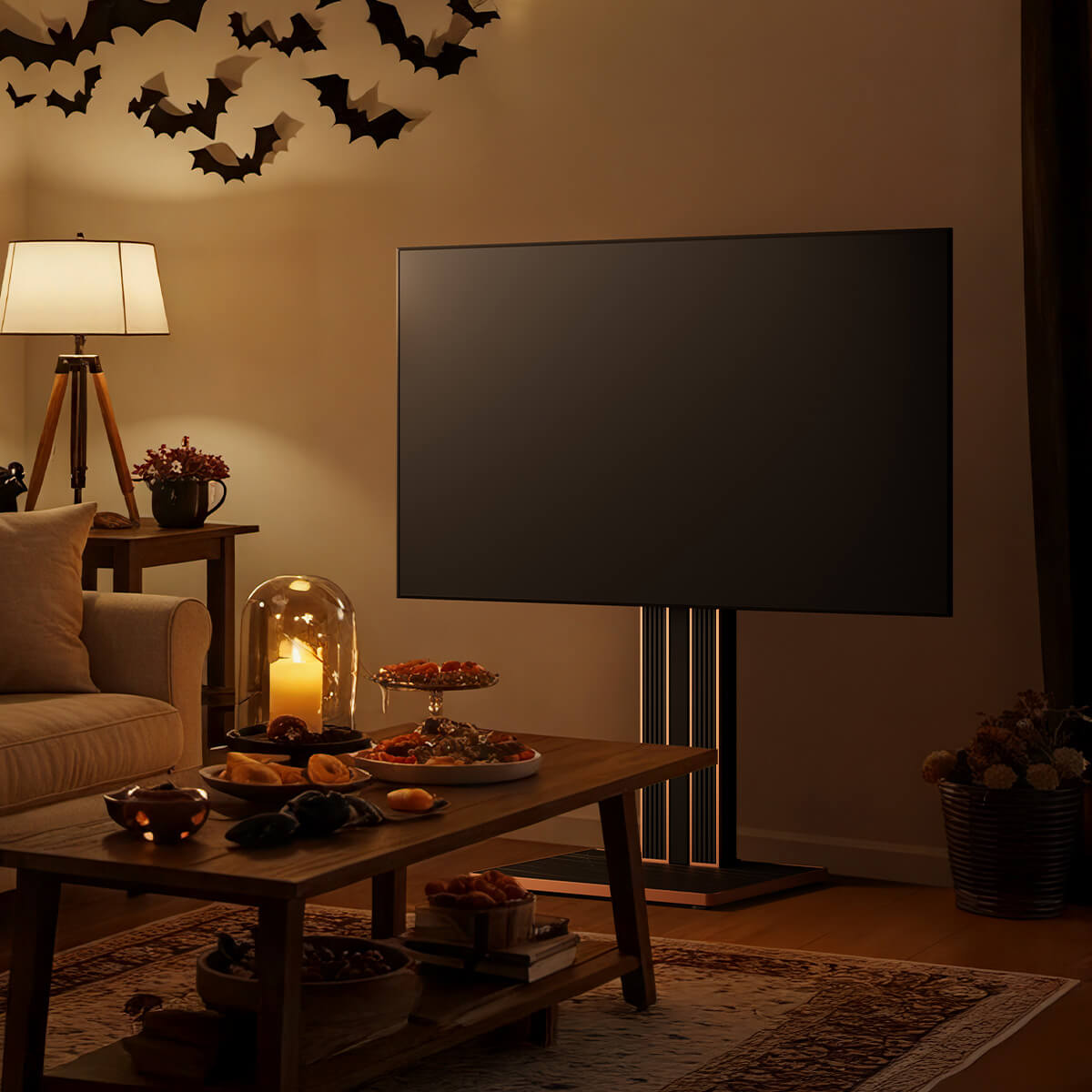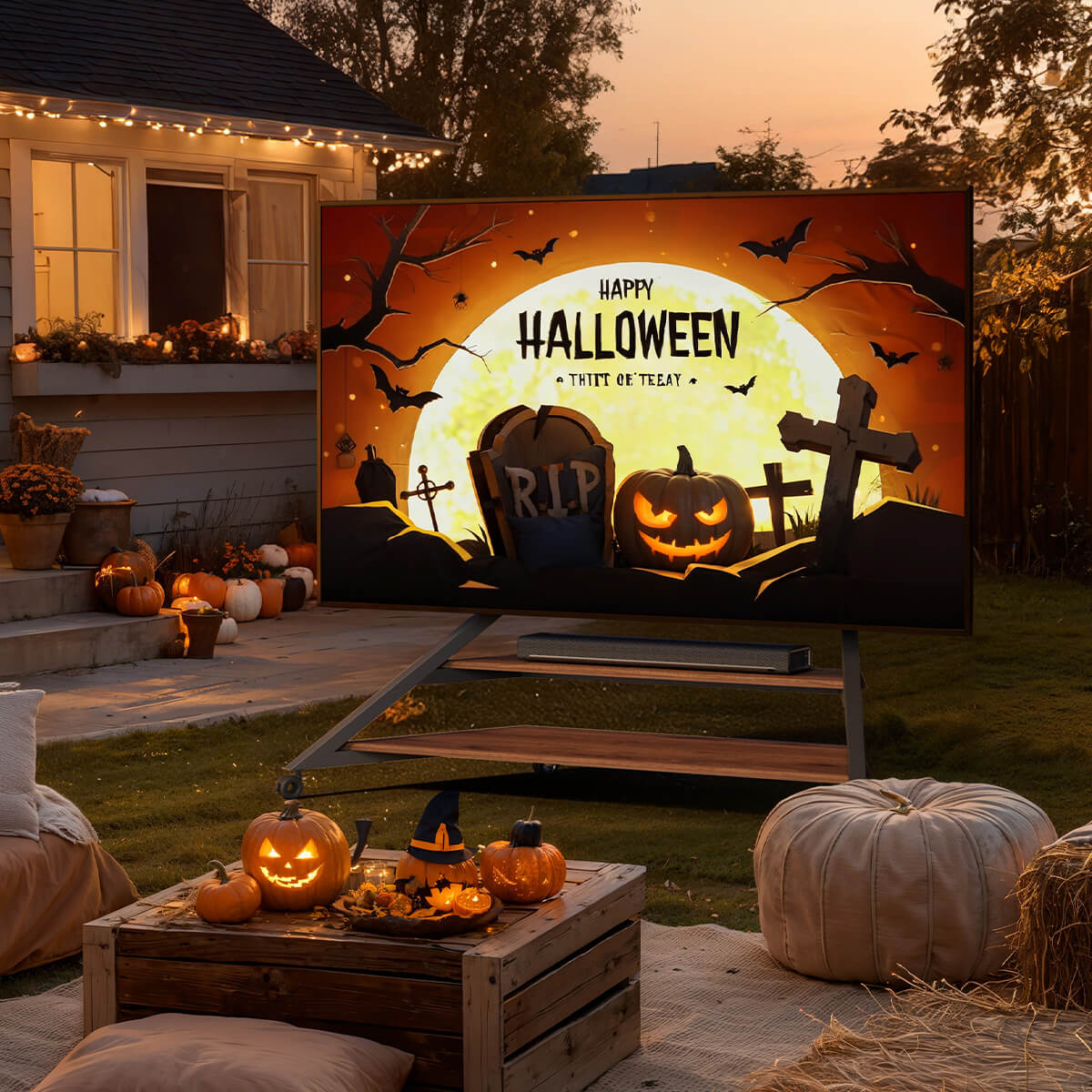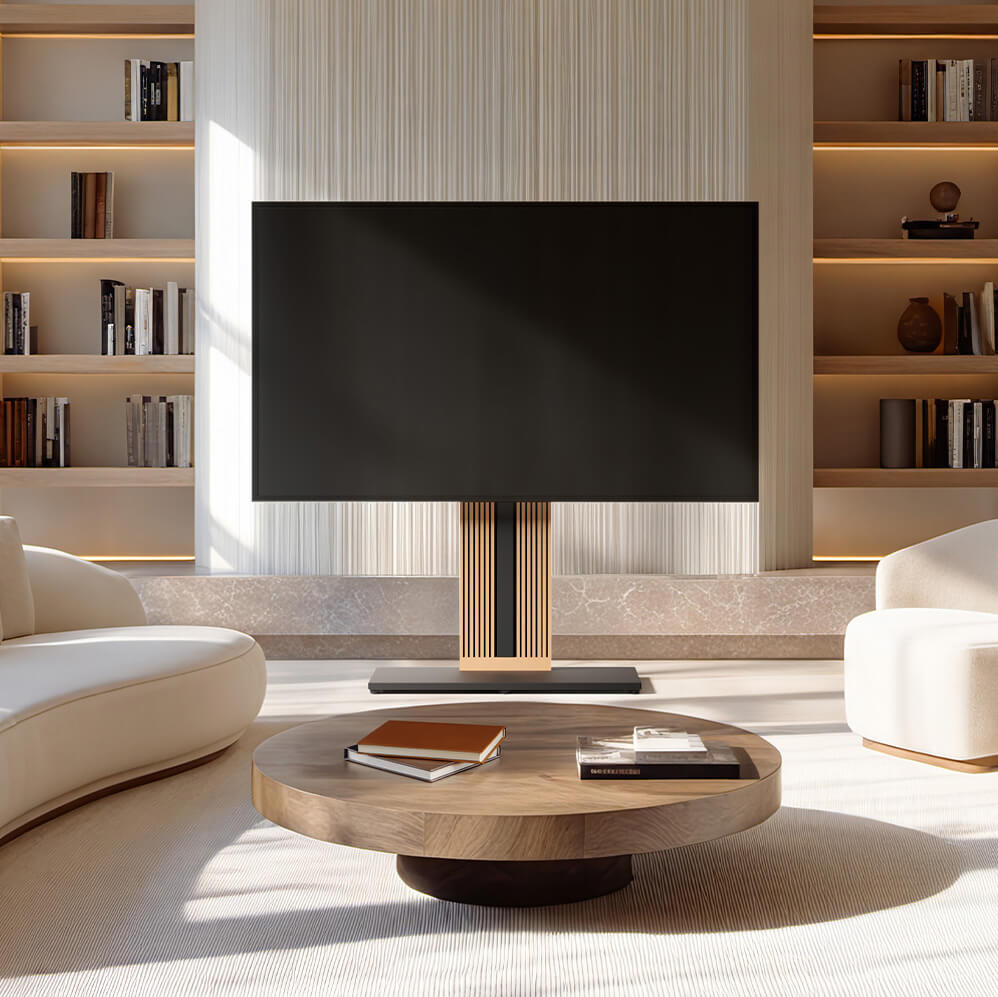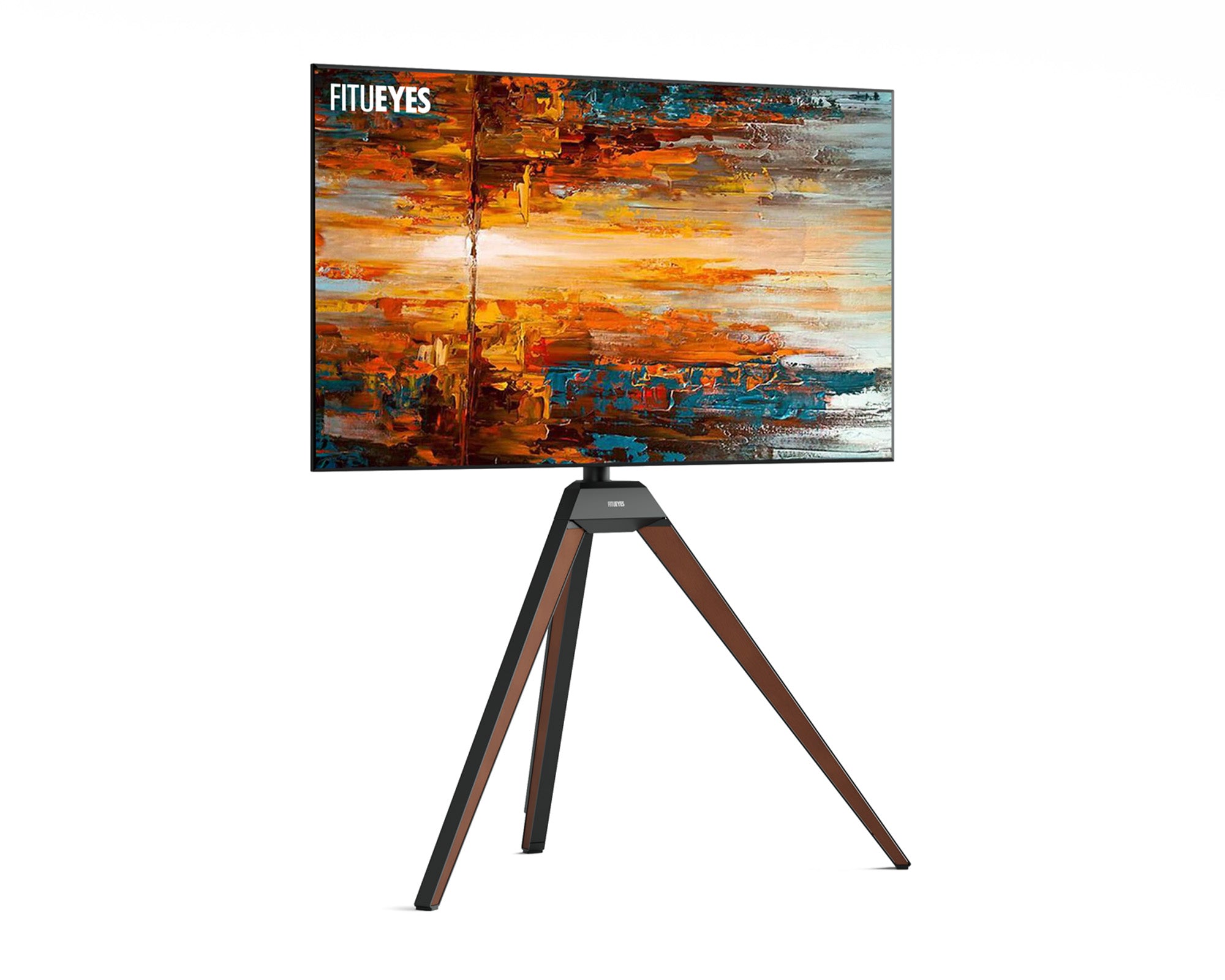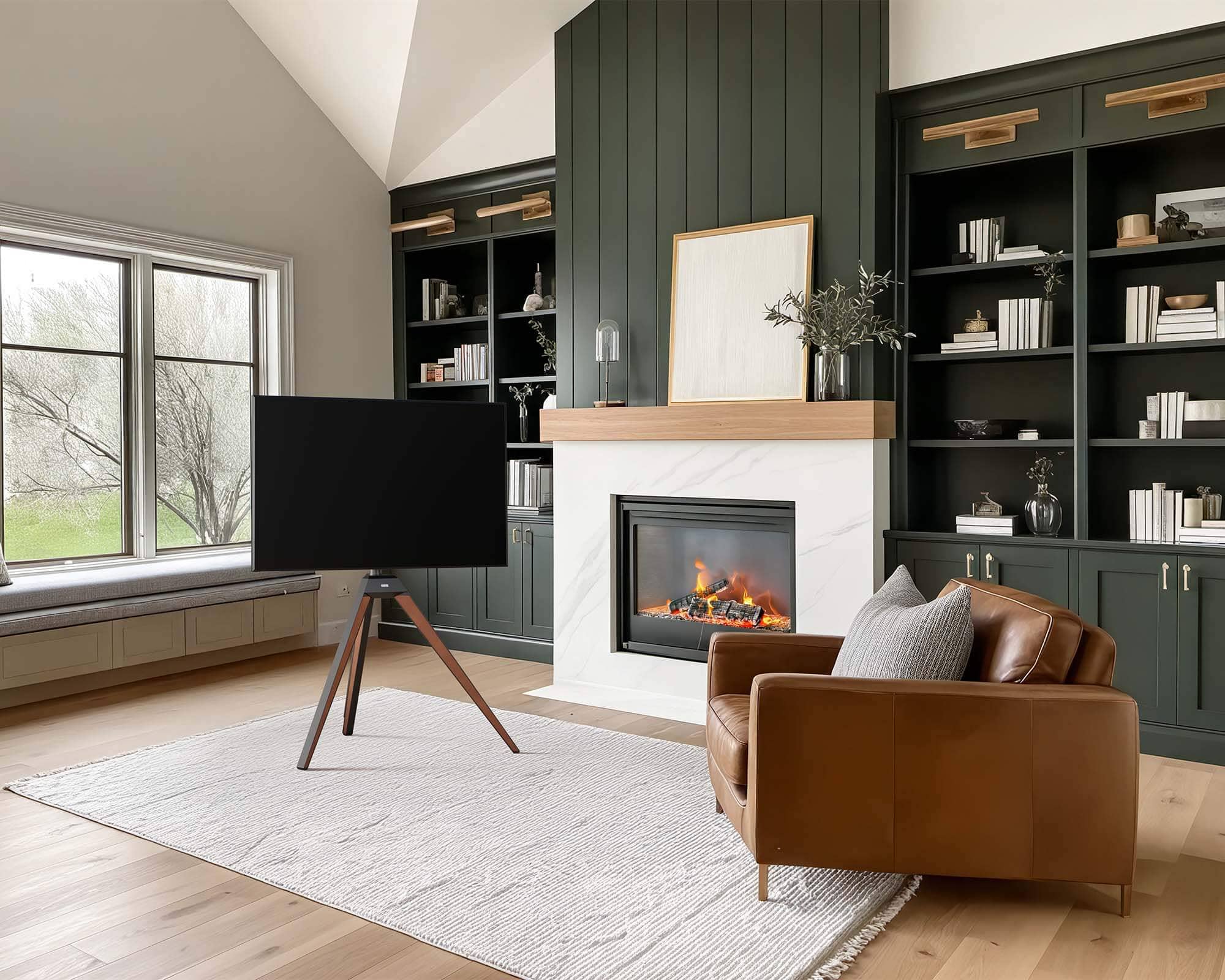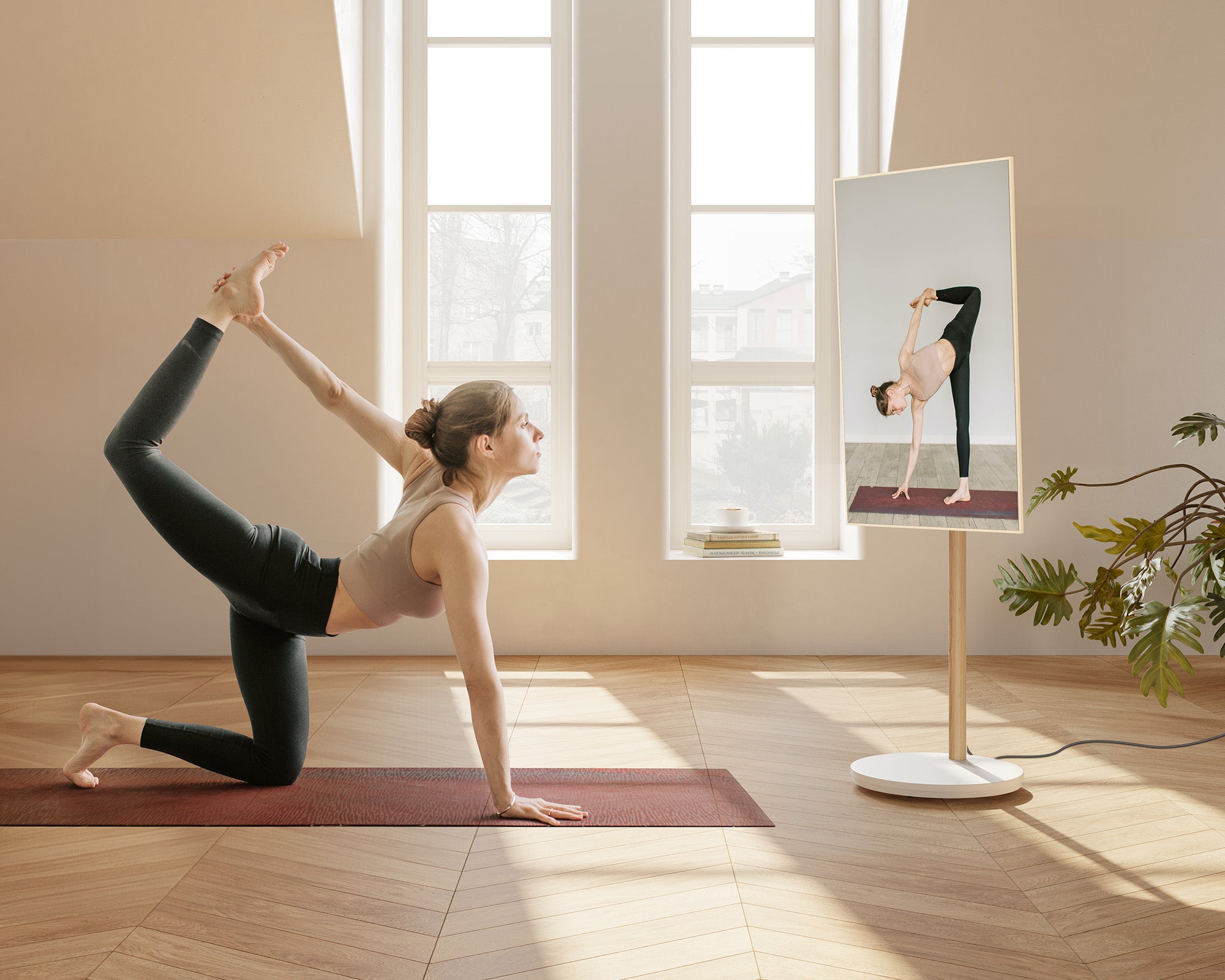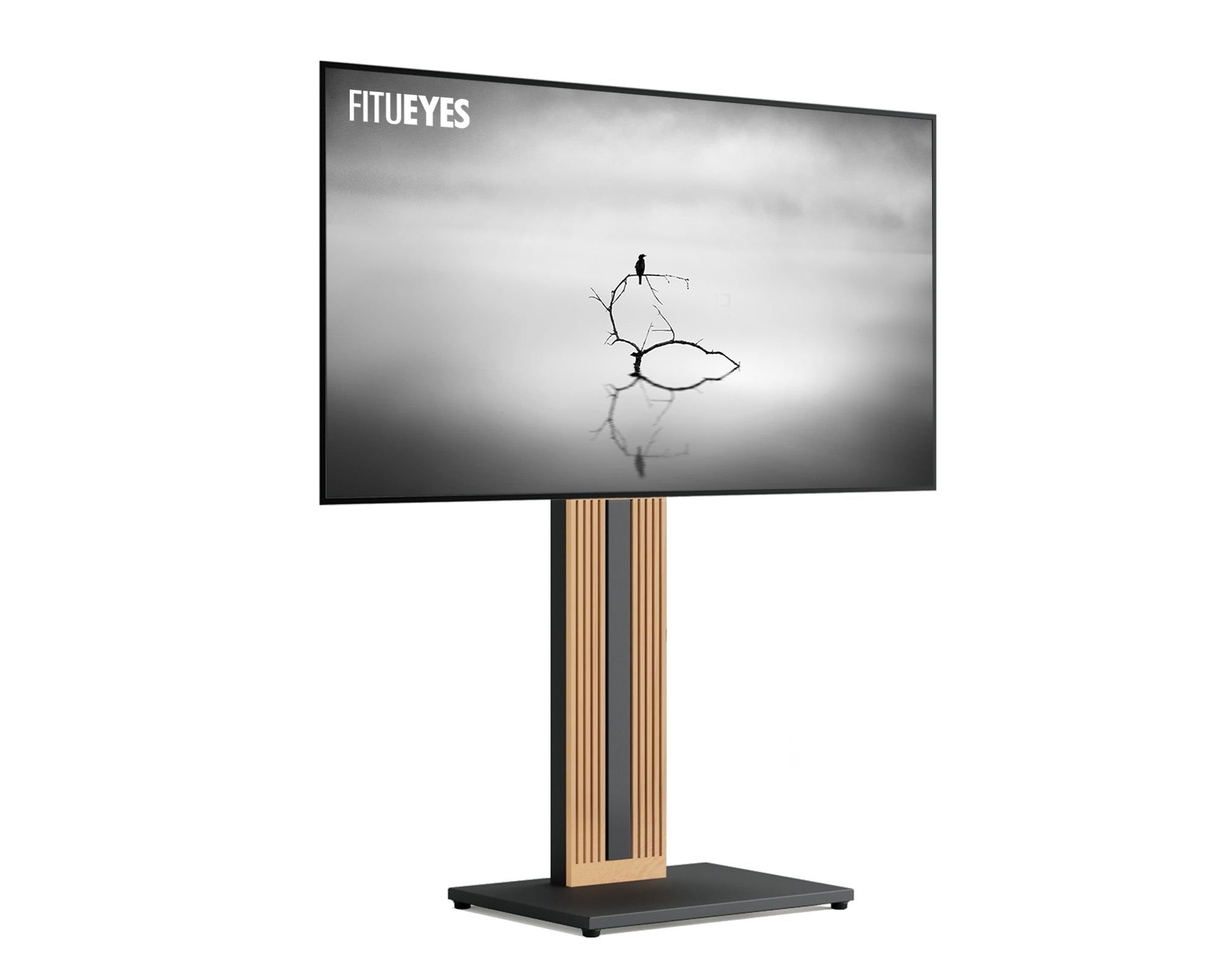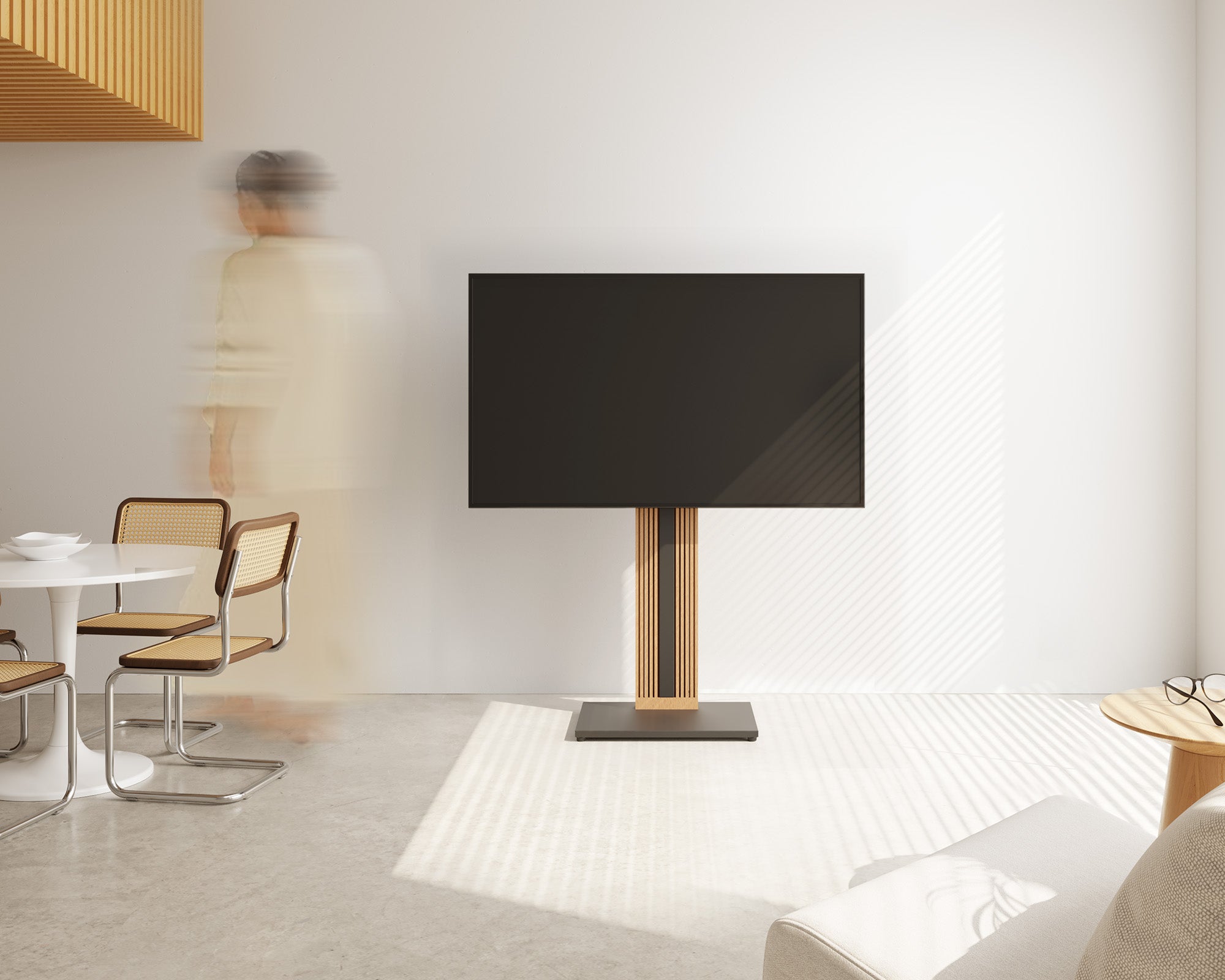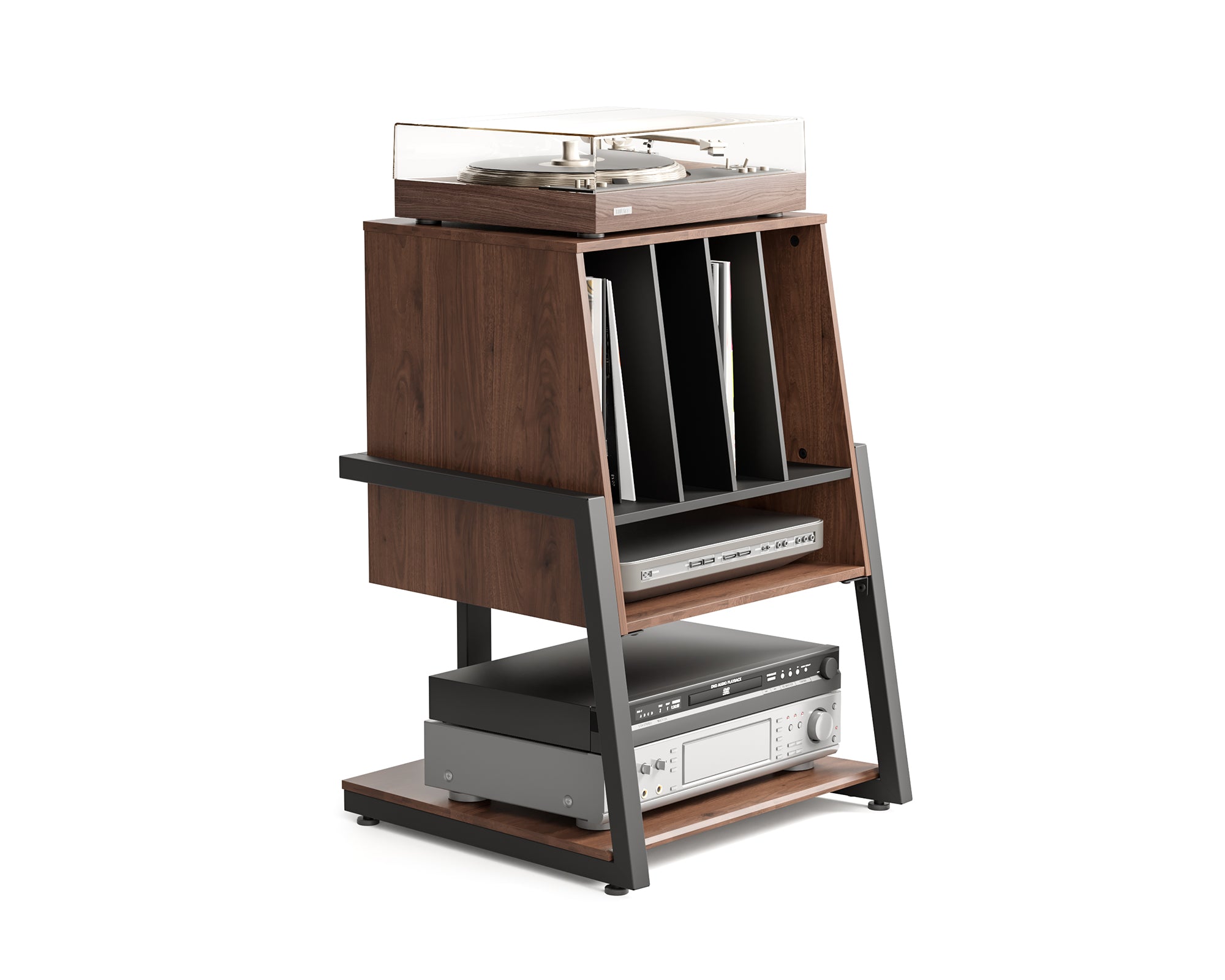How to Measure Your TV for the Perfect Stand Fit
Measure the width and height of your TV
- Use a tape measure to check the full width (left to right) and height (top to bottom) of your screen.
- Write these measurements down – they will serve as your key reference.
Choose a TV stand that is wider than your TV
- For safety, stability and style, your TV stand should be at least 20% wider than the television itself.
- Example: If your TV is 50 inches wide, choose a stand about 60 inches wide.

Select the Right Height for Your TV Stand
Ideal viewing height
- Ideally, the centre of your TV screen should be at eye level when you are seated – usually about 106 centimetres (42 inches) above the floor.
- If your seating is higher or lower than average, adjust the stand height accordingly.
Height-adjustable TV stands
- Choose stands or cabinets with adjustable height.
- Thanks to this flexibility, you can adjust the height precisely to your personal comfort.
Make Sure Your Stand Supports the Weight of Your TV
Check load capacity
- Always check the maximum load capacity specified by the manufacturer.
- For larger TVs (65 inches and above), choose a stand made from solid wood or metal for greater stability.
Stability and Anti-Tip Safety
- Choose a stand that is stable and well balanced.
- If you have children or pets at home, consider stands with anti-tip kits or designs made for extra stability.
Choosing the Right Stand for Your Room Size
Small rooms and apartments
- Opt for compact, multifunctional stands.
- Consider a TV stand made of wood to maximize space and style.
Large living rooms
- Larger stands or consoles can anchor the room and prevent it from feeling empty.
- Wider pieces of furniture generally offer additional storage space and shelves, making them ideal for housing extra electronic devices or decorative items.

The Best Materials for TV Stands: Which Option Is Right for You?
Material | Advantages | Disadvantages |
Solid wood | Durable, timeless style | Heavier, usually more expensive |
Wood-based material | Affordable, lightweight | Less durable than solid wood |
Metal | Exceptionally durable, modern look | Can be heavy, style-dependent |
Glass | Elegant and minimalist design | Fragile, requires regular cleaning |
- Solid wood or metal stands are best suited for large TVs.
- Wood composites or glass work well for smaller TVs or stylish, modern interiors.
Storage and Cable Management: Keep Your TV Area Organised
Integrated Storage for a Tidy Setup
- Look for a TV stand that allows you to neatly store gaming consoles, streaming devices, and other accessories out of sight in cabinets or shelves.
Effective Cable Management
- Select a TV unit with cable grommets, hidden channels, or compartments.
- Proper cable management keeps your setup tidy and prevents safety hazards.
Choosing a TV Stand That Matches Your Décor
Match Your Existing Furniture
- Look at your existing furnishings and select materials or colours that harmonise naturally.
- Wood tones like oak or walnut suit traditional rooms, while black, white, or metal complements modern interiors.
Functionality and Style in Balance
- Don’t compromise on practicality for aesthetics. Choose a stand that combines style with useful features such as storage compartments or height adjustability.

F&Q
How high should a TV stand be?
- A TV stand with a height of about 50–60 cm is generally ideal, ensuring the centre of your television is approximately at eye level when seated. Adjust the height if your seating position is higher or lower than average for maximum comfort.
Is Wall Mounting or TV Stand Mounting Preferable?
- Both options have their advantages:
- Wall mounting saves space and provides a tidy aesthetic look.
- TV stand mounting offers storage space and is easier to install. Stand-mounted TVs can also be moved freely to suit different layouts or room requirements.
Recommended TV Stand Sizes: Quick Overview
| TV Size | TV Width (approx.) | Recommended Stand Width |
| 32-inch | 28 inches | 32–40 inches |
| 43-inch | 38 inches | 44–50 inches |
| 50–55 inch | 44–48 inches | 52–60 inches |
| 60–65 inch | 52–57 inches | 62–70 inches |
| 70–75 inch | 61–66 inches | 72–80 inches |







